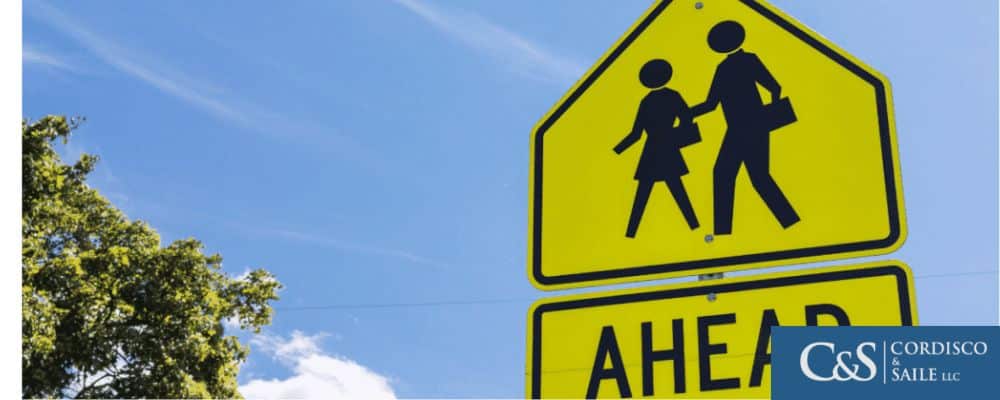Pennsylvania Laws for Driving in School Zones

Children are some of the people most vulnerable to pedestrian accidents both because of their size and innocence. The increased volume of schoolchildren foot traffic around schools creates an even higher risk of danger. That’s why Pennsylvania laws set down strict rules for motorists driving in school zones.
Pennsylvania School Zone Laws
Laws governing motorists driving through school zones are contained in Title 75 Section 212.501 and Title 75 Section 3365(b). The law includes the following rules.
- Pennsylvania requires that a school zone be clearly identified using a sign denoting the beginning of the zone and a separate sign defining the end of the school zone.
- Under the Pennsylvania Code, a school zone speed limit of 15 mph may apply.
- The speed limit applies during all the normal hours that walking students are arriving to school or leaving school.
Penalties for Violations of Speed Limits in a School Zone
The law also provides for penalties for persons found violating the speed limits in school zones. Persons who violate these limits could face fines up to $500. A violation could also result in three points added to your driving record. A second violation could result in license revocation for a period of up to 60 days.
Speeding drivers are a major threat to schoolchildren walking to or leaving school. But it isn’t only children who walk to or from school who may be at risk. Some children may walk a short distance outside the school to meet a parent, for example. Others may bike to and from school. So it’s important for all drivers to do their part to prevent pedestrian or bicycle accidents involving school driven around a school.
Distracted Driving in School Zones
Apart from speeding motorists, children in a school zone are also at a high risk of accidents involving distracted drivers. A report by Safe Kids USA focused on vehicles that were traveling through school zones, finding that as many as one in six motorists were distracted while they were traveling through the zone.
The researchers found that the distraction rate was similar for male and female drivers. The most common types of distractions while driving through a school zone were the use of cell phones and electronic devices.
Besides using a cell phone, drivers were discovered to be taking part in other distracting behaviors.
- Snacking
- Grooming and applying makeup
- Smoking
- Reading
The same study also found that the rate of distracted drivers was higher in school zones that had no flashing lights and those that had traffic volumes of more than 10,000 cars per day. Drivers of larger cars like minivans and sport-utility vehicles were more likely to be distracted in school zones.
The researchers note that drivers in states with handheld electronic bans for drivers of all ages were 13 percent less likely to be distracted compared to drivers in other states without such bans.
Pennsylvania prohibits all drivers from texting while behind the wheel, and generally requires that drivers not engage in dangerous behavior while behind the wheel. Failure to do so could result in penalties, and could leave the driver liable if he or she causes a distracted driving-related accident.
Child Pedestrian or Bicycle Accidents and Liability
A driver who strikes a child pedestrian or bicyclist may be liable for damages that the child – and parents – suffer as a result. Compensation should take into account short-term and long-term damages, as children may suffer lasting effects of injuries in some cases.
Get help filing a claim on behalf of your injured child; speak to a car accident lawyer at Cordisco & Saile LLC. Call 215-642-2335 to set up a consultation with a lawyer. You could also fill out our contact form to schedule your free consultation.







